Трябва да сте влезли в
-
moreX
-
Компоненти
-
-
Category
-
полупроводници
- Диоди
- Тиристори
-
Електрически изолирани модули
- Електроизолирани модули VISHAY (IR).
- Електроизолирани модули INFINEON (EUPEC).
- Електрически изолирани модули на Semikron
- Електроизолирани модули POWEREX
- Електроизолирани модули IXYS
- Електроизолирани модули от POSEICO
- Електрически изолираните модули на ABB
- Електроизолационни модули от TECHSEM
- Go to the subcategory
- Мостови токоизправители
-
Транзистори
- GeneSiC транзистори
- Mitsubishi SiC MOSFET модули
- STARPOWER SiC MOSFET модули
- ABB SiC MOSFET модули
- IGBT модули от MITSUBISHI
- Транзисторни модули MITSUBISHI
- MITSUBISHI MOSFET модули
- Транзисторни модули ABB
- IGBT модули от POWEREX
- IGBT модули - от INFINEON (EUPEC)
- Полупроводникови елементи от силициев карбид
- Go to the subcategory
- Шофьори
- Силови блокове
- Go to the subcategory
- Преобразуватели за ток и напрежение LEM
-
Пасивни компоненти (кондензатори, резистори, предпазители, филтри)
- Резистори
-
Предпазители
- Миниатюрни предпазители за електронни системи серия ABC и AGC
- Бързодействащи тръбни предпазители
- Забавени вложки с GL/GG и AM характеристики
- Изключително бързи предпазители
- Британски и американски стандартни бързодействащи предпазители
- Бързодействащи предпазители европейски стандарт
- Тягови предпазители
- Предпазители за високо напрежение
- Go to the subcategory
-
Кондензатори
- Кондензатори за двигатели
- Електролитни кондензатори
- Icel филмови кондензатори
- Силови кондензатори
- Кондензатори за постояннотокови вериги
- Кондензатори за компенсация на мощността
- Кондензатори за високо напрежение
- Кондензатори за индукционно нагряване
- Импулсни кондензатори
- DC LINK кондензатори
- Кондензатори за AC/DC вериги
- Go to the subcategory
- Филтри против смущения
- Суперкондензатори
- Защита от пренапрежение
- Разкриващи емисионни филтри TEMPEST
- Go to the subcategory
-
Релета и контактори
- Теория на релетата и контакторите
- AC 3-фазни твърдотелни релета
- DC твърдотелни релета
- Регулатори, системи за управление и аксесоари
- Мек старт и реверсивни контактори
- Електромеханични релета
- Контактори
- Ротационни превключватели
-
Еднофазни AC твърдотелни релета
- Еднофазни променливотокови полупроводникови релета Серия 1 | D2425 | D2450
- Еднофазни AC полупроводникови релета CWA и CWD серия
- Еднофазни AC полупроводникови релета серии CMRA и CMRD
- Еднофазни AC твърдотелни релета PS серия
- AC твърдотелни релета двойни и четворни серии D24 D, TD24 Q, H12D48 D
- Еднофазни полупроводникови релета от серия GN
- Еднофазни променливотокови твърдотелни релета серия CKR
- Монофазни AC релета за DIN шина ERDA и ERAA СЕРИЯ
- Монофазни AC релета за ток 150А
- Двойни твърдотелни релета, интегрирани с радиатор на DIN шина
- Go to the subcategory
- AC еднофазни печатни твърдотелни релета
- Интерфейсни релета
- Go to the subcategory
- Ядра и други индуктивни компоненти
- Радиатори, Варистори, Термична защита
- Фенове
- Климатик, Аксесоари за табла, Охладители
-
Батерии, зарядни устройства, буферни захранвания и преобразуватели
- Батерии, зарядни устройства - теоретично описание
- Литиево-йонни батерии. Персонализирани батерии. Система за управление на батерията (BMS)
- Батерии
- Зарядни за батерии и аксесоари
- UPS и буферни захранвания
- Конвертори и аксесоари за фотоволтаици
- Съхранение на енергия
- Водородни горивни клетки
- Литиево-йонни клетки
- Go to the subcategory
-
Автоматизация
- Подемници Spiralift
- Части за дронове Futaba
- Крайни изключватели, Микро ключове
- Сензори, Преобразуватели
- Пирометри
- Броячи, Релета за време, Панелни измервателни уреди
- Индустриална защитна екипировка
- Светлинни и звукови сигнали
- Термовизионна камера
- LED дисплеи
- Бутони и превключватели
- Go to the subcategory
-
Кабели, Litz проводници, Тръбопроводи, Гъвкави връзки
- Проводници
- Кабелни щуцери и ръкави
- лица
-
Кабели за специални приложения
- Удължителни и компенсаторни кабели
- Кабели за термодвойки
- Свързващи кабели за PT сензори
- Многожилни кабели темп. -60°C до +1400°C
- Кабели средно напрежение SILICOUL
- Кабели за запалване
- Нагревателни кабели
- Едножилни кабели темп. -60°C до +450°C
- Железопътни проводници
- Нагревателни кабели в Ex
- Кабели за отбранителната промишленост
- Go to the subcategory
- тениски
-
Плитки
- Плоски плитки
- Кръгли плитки
- Много гъвкави плитки - плоски
- Много гъвкави плитки - кръгли
- Цилиндрични медни оплетки
- Медни цилиндрични оплетки и капаци
- Гъвкави ленти за заземяване
- Цилиндрични оплетки от поцинкована и неръждаема стомана
- Медни оплетки с PVC изолация - температура до 85 градуса
- Плоски алуминиеви оплетки
- Комплект за свързване - оплетки и тръби
- Go to the subcategory
- Тягово оборудване
- Накрайници за кабели
- Изолирани гъвкави релси
- Многослойни гъвкави шини
- Системи за управление на кабели
- Go to the subcategory
- View all categories
-
полупроводници
-
-
- Suppliers
-
Applications
- CNC машини
- DC и AC задвижвания (инвертори)
- Двигатели и трансформатори
- Енергетика
- Енергийни банки
- Заваръчни машини и заварчици
- Захранвания (UPS) и токоизправителни системи
- Измерване и регулиране на температурата
- Изследвания и лабораторни измервания
- Индукционно нагряване
- Индустриална автоматизация
- Индустриална защитна екипировка
- Компоненти за зони с опасност от експлозия (EX)
- Машини за сушене и обработка на дървесина
- Машини за термоформоване на пластмаси
- Минно дело, металургия и леярство
- Оборудване за разпределителни и контролни шкафове
- ОВК автоматизация
- Печат
- Трамвайна и железопътна тяга
-
Инсталация
-
-
Индуктори
-
-
Индукционни устройства
-
-
Обслужване
-
- Contact
- Zobacz wszystkie kategorie
Wireless communication

Technological development in the whole history has never been progressing as quickly - practically every area of our life has been transformed in the last several decades and is continuously going through evolution, with which we most often can’t keep up, and also usually don’t notice it because all these changes naturally become a part of our lives.
Wireless communication is rapidly replacing cable technology and becoming a basic method of communication in daily life, production workshops, services and commercial sectors.
How does wireless communication (Wi-Fi) work?
Wireless communication technology, also called Wi-Fi, is currently one of the most popular connection methods. This type of technology transfers data not through a cable, but through electromagnetic waves such as radio waves, infrared light or satellite signals. This method, although it can do the same tasks as cable communication, provides extra mobility, simplicity of usage and saving time and money while installing the system. Wireless communication is also especially useful in emergency situations or in remote work.
Wireless communication allows for:
- data transmission in distance of several (e.g. TV remote control) to numerous thousands of km (e.g. radio communication;
- application in mobile phones (3G/4G), wireless internet, smart homes (e.g. door lock, opening garage), GPS, headphones, etc.;
- application in communication systems between vehicles (V2V), identification systems with sensors and radio identification (RFID), and also in air and sea transport.
Types of wireless networks
There are special standards of using wireless communication, and is divided into four categories:
- Wireless Personal Area Network, WPAN,
- Wireless Local Area Network, WLAN,
- Wireless Metropolitan Area Network, WMAN,
- Wireless Wide Area Network, WWAN.
Application of wireless technology
Mobile technology
Mobile network technology is called WWAN - providing connectivity on huge distances of cities and countries. Mobile phones use satellite systems such as: 2G; Long Term Evolution (LTE); GSM, CDMA 2000, CDPD and Mobitex.
Third generation systems (3G) are so-called Universal Mobile Telecommunication System (UMTS) - allow for access to the internet, data, multimedia, etc. There is also generation 3.5 and 3.75, including High Speed Downlink Packet Access (HSDPA) and High Speed Uplink Packet Access (HSUPA) - HSDPA allows for 2 Mb/s data download speed, and HSUPA 1,45 Mb/s.
Fourth generation (4G) provides broadband connection with the internet e.g. thanks to wireless modems. The speed of data download reaches from 100 Mb/s to 1 Gb/s, and sending to 60 Mb/s.
NFC (Near Field Communication)
Current NFC devices are commonly used in contactless payments and social media (for sharing contacts, pictures, videos and files). Near Field Communication (NFC) is short distance connection technology, which allows for communication between devices after direct contact. NFC works with a frequency of 13,56 MHz and provides data transmission up to 424 kb/s at a distance of about 10 cm. This type of technology is present in modern models of smartphones, tablets and other devices, and provides safety after contacting proper devices with each other and which are able to use this type of communication.
RFID technology
Radio identification (RFID) is short-distance, automatic and contactless, which uses radio electromagnetic fields to receive and read information of a given object from data saved on an identifier. RFID technology is commonly used for following and identifying resources and devices though an antenna. RFID range is from 1 to 12 meters, and speed of 640 kb/s.
Bluetooth
Bluetooth's connection uses WPAN technology - wireless transfer of data for short distances. This type of technology for years has been commonly used in mobile phones, headphones, computers, laptops, GPS, and car radios. Bluetooth uses a radio system and is intended for short-distance connection.
Zigbee technology
It is a wireless network with small power, intended for sending data of low speed and short distance. It is usually used in small digital radio transmitters in home automatics, sensors, medical devices, control systems e.g. light systems and home safety measures, etc. There is also a ZigBee version - ZigBee PRO protocol, which provides additional possibilities e.g. roads, jumps in network, maximum number of devices and network safety.
Z-Wave (WPAN) technology
It is a wireless technology working in radio frequencies - guarantees the possibility of controlling home automatics through a smartphone and managing communication between smart devices e.g. light control, locks and thermostats.
Wi-Fi (WLAN)
It is a local wireless network technology, using radio waves. Provides fast internet connection and access to it from any location e.g. public places, private institutions, homes, etc. Wi-Fi allows for connecting to the network to many devices at the same time, such as computers, phones, printers. It can be easily configured or extended through extra radio Wi-Fi cards for other devices. Benefits of Wi-Fi are lack of cables, lower costs and mobility.
LoRa (LPWAN) and Sigfox (LPWAN) technology
LoRa is a protocol of LoRaWAN - it provides long-distance connection and can be used in the creation of LoT. It is a wireless technology of transferring data with small speed for big distances - most often used in industrial sectors, research and medical fields, to provide big range communication between remote sensors connected to the network. LoRa is especially useful for smart measurements, monitoring inventory, vending machines, and automotive.
Sigfox technology is similar to LoRa, but it’s closed network. Sigfox is a wireless connection with a low power intake, also used in IoT.
World without wireless communication - why can't we live without it?
Today, almost all of us have a phone, radio, TV or tablet and on a daily basis uses multimedia and services available thanks to the wireless connection to the Internet. Each day millions of voicemails, videos, photos, data and more are sent from device to device or shared online.
Due to the rapidly increasing need for wireless connection, wireless communication systems are still developing, and today we can distinguish at least several dozens of their types, including:
- TV and radio,
- Satelity communication,
- Radars,
- Mobile networks,
- GPS (Global Positioning System),
- Infrared light,
- WLAN (Wi-Fi),
- Bluetooth
- Pagers,
- RFID.
Wireless communication irreversibly became a part of our lives - we use it every day for years, but we’re often not aware of it or think about it. Video calls, sending files to the cloud, sharing, social media, online and contactless payments, or recently popular smart home systems became so natural, that we are rarely surprised by anything, and even if we are, it quickly becomes part of our daily lives.
Wireless communication systems provide many benefits, which can be listed for a long time. Some benefits include:
- Cost-saving because of the lack of cables and need for adjusting the surroundings to the wires’ installation.
- Flexibility and convenience - allows for using mobile, easy to use and compact devices in almost any place.
- Speed and reliability of data transfer significantly exceeds cable connection, which additionally is more faulty.
- Access - remote work and education, access to the internet in rural areas.
- Connection continuity allows for immediate replying and informing in an emergency.
There are a few significant disadvantages of wireless communication, such as:
- Network disruptions - there is a possibility of signal disruptions through a signal from another device e.g. Wi-Fi (WLAN) and Bluetooth signal conflict.
- Safety - because data is sent in an open space network, there is a risk that our information and personal data can be acquired by third parties.
- Health effects - too long exposure to any radiation type can cause risk to our health. Although safe levels of radio energy frequency (RF) are not entirely known, it is recommended to avoid exposure to huge radiation and to limit exposure time.
Related products
Related posts
 Now available – DC/DC converters from PREMIUM
Now available – DC/DC converters from PREMIUM
 New release in DACPOL lighting for lathes – Kira covers
New release in DACPOL lighting for lathes – Kira covers

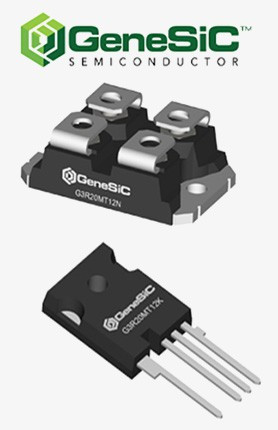
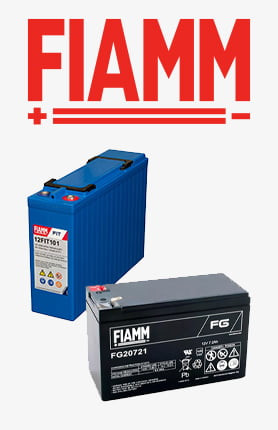
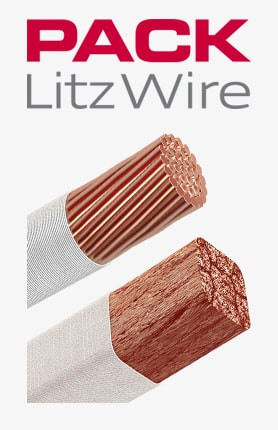
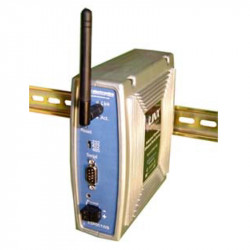
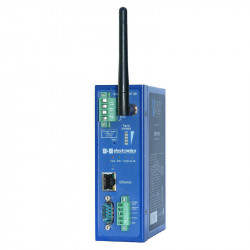
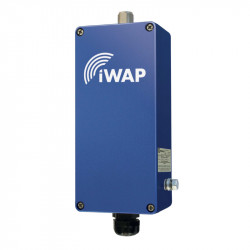
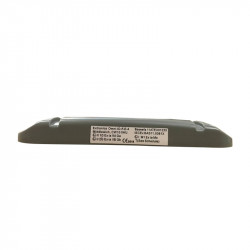
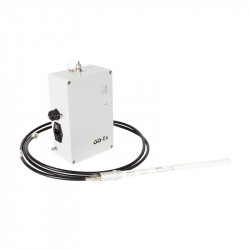
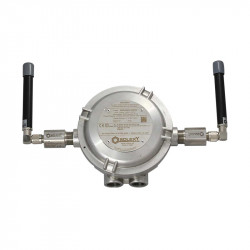
Leave a comment